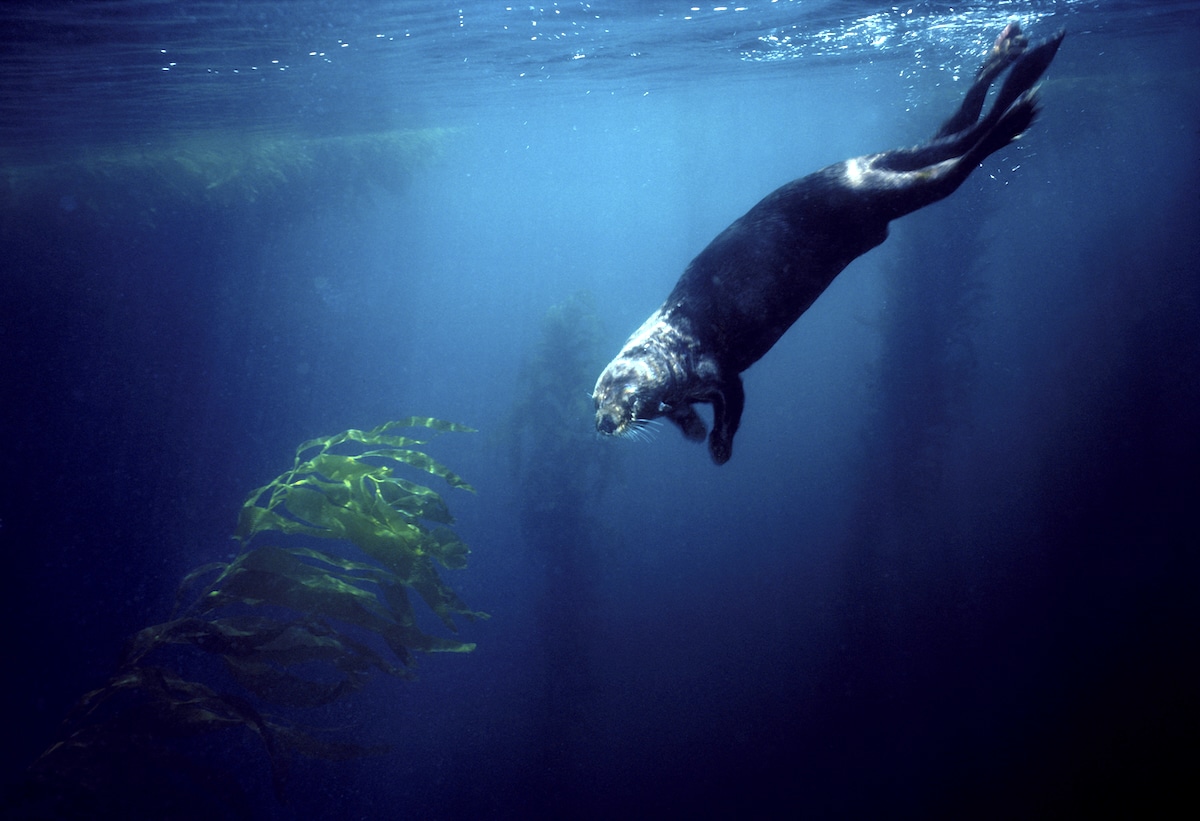Southern sea otters, known for their playful antics and endearing appearances, are more than just charming residents of California’s central coast.
Over the past century, they have played a crucial role in preventing the widespread decline of kelp forests, providing an unexpected yet vital service to these underwater ecosystems.
From Near Extinction to Environmental Stewards
In the 19th century, southern sea otters faced near extinction due to extensive hunting for their luxurious fur. By the early 20th century, their numbers had dwindled so significantly that many believed the species had vanished. However, as Science Daily reports, a small population survived along California’s central coast, setting the stage for an incredible ecological comeback.
Researchers at the Monterey Bay Aquarium conducted a comprehensive study, revealing the dramatic changes in kelp forest canopies along the California coast from 1910 to 2016. They found that while kelp forests in northern and southern California experienced significant declines—by 63% and 52%, respectively—those along the central coast thrived, increasing by 56%, according to Indiana Public Media. The primary driver behind this regional resilience was the sea otters’ growing population.
Keystone Species and Kelp Forest Resilience
Sea otters are considered a keystone species, meaning their presence has disproportionately large effects on their environment. One of the primary ways otters contribute to kelp forest health is by preying on sea urchins. These spiny creatures, when left unchecked, can decimate kelp forests, particularly under stress from climate change. By keeping sea urchin populations in check, otters help maintain the balance necessary for kelp to thrive, IPM reports.
The study underscores how the otters’ role as predators helped buffer kelp forests against various environmental stressors, including ocean warming. This relationship highlights the broader ecological principle that healthy predator populations can enhance the resilience of entire ecosystems against climate change impacts.
Adaptation and Survival: Tool Use Among Sea Otters
Furthering their impact on the environment, sea otters exhibit remarkable adaptability in their foraging behavior. When traditional prey like urchins and abalone become scarce, otters turn to other hard-shelled creatures, using rocks and shells as tools to crack open these tough meals, reports NewsNation Now. This behavior not only helps them access vital nutrients but also preserves their dental health by reducing tooth damage from constant hard-shell consumption.
Chris Law, a postdoctoral researcher at the University of Texas at Austin, noted that tool use is especially prevalent among female otters, who bear the energetic cost of raising pups. These females often use tools to efficiently forage, ensuring they can sustain both themselves and their young in the cold Pacific waters, Hoodline reports.
Historical Maps and Modern Insights
To understand the long-term trends in kelp forest health, Monterey Bay Aquarium scientists employed historical surveys dating back to the early 1900s. These surveys provided a comprehensive view of kelp canopy extent, biomass, and carbon storage over a century, corrected for annual variations and differences in survey methods, according to Science Daily. This extensive dataset allowed researchers to compare historical estimates with contemporary data, offering a robust analysis of kelp forest trends.
The findings from these historical maps revealed a significant regional variation in kelp forest changes. The central coast’s kelp forest expansion almost entirely offset the losses in the northern and southern regions, resulting in only a slight overall decline statewide, IPM reports.
Implications for Conservation and Ecosystem Management
The resilience of kelp forests along the central coast, driven by the sea otter population, suggests that reintroducing otters to their historical habitats in northern and southern California could help restore these vital ecosystems. Healthy kelp forests provide numerous benefits, including serving as nurseries for fisheries, reducing coastal erosion, and contributing to carbon sequestration, Hoodline reports.
Moreover, this study emphasizes the importance of predator conservation in managing ecosystem health. By protecting and encouraging the growth of keystone species like sea otters, we can enhance the resilience of entire ecosystems against the multifaceted threats posed by climate change.
The Future of Sea Otters and Kelp Forests
The story of the southern sea otters and their impact on kelp forests serves as a powerful reminder of the intricate connections within our natural world. As conservation efforts continue to support the recovery of sea otter populations, the broader ecological benefits of their presence become increasingly evident.
These playful creatures, once nearly lost to human greed, now stand as vital guardians of one of the ocean’s most important ecosystems.
This article by Matthew Russell was first published by The Animal Rescue Site. Lead Image: A group of sea otters wrapped in kelp at Morro Bay, Calif. Photo by Mike Baird/Flickr (CC BY 2.0).
What you can do
Help to save wildlife by donating as little as $1 – It only takes a minute.



Leave a Reply